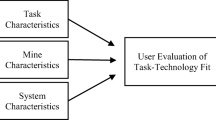Abstract
Accident data indicates that mobile haulage poses a significant pinning, crushing, and striking risk. Proximity detection systems (PDSs) have the potential to protect mineworkers from these risks. However, unintended consequences of mobile PDSs can undermine the safety benefit they provide. Soliciting iterative user input can improve the design process. Users help provide a critical understanding of how mobile PDSs may hinder normal operation and endanger mineworkers. Researchers explored users’ perspectives by conducting interviews with mineworkers from seven mines that have installed mobile PDSs on some of their haulage equipment. Mineworkers reported that mobile PDSs affect loading, tramming, section setup, maintenance, and general work on the section. Mineworkers discussed the operational effects and increased burden, exposure, and risk. Mineworkers also suggested that improved task compatibility, training, logistics, and PDS performance might help address some of these identified issues. This paper also gives additional insights into mobile PDS design and implementation.


Similar content being viewed by others
Notes
Shumaker W. MSHA. Personal correspondence, January, 2017.
References
Mine Safety and Health Administration (2015) Preliminary regulatory economic analysis for proximity detection systems for mobile machines in underground mines. Proposed Rule. Office of Standards, Regulations, and Variances
Mine Safety and Health Administration (2015) Proximity detection systems for continuous mining machines in underground coal mines. 30 CFR 75.1732, vol 1219-AB65. Federal Register
Mine Safety and Health Administration (2015) Proximity detection systems for mobile machines in underground mines. 30 CFR 75.1733, vol 1219-AB78. Federal Register
Mine Safety and Health Administration (2015) Fact sheet: proposed rule on proximity detection systems for mobile machines in underground mines
Ruff TM (2007) Recommendations for evaluating and implementing proximity warning systems on surface mining equipment. National Institute for Occupational Safety and Health, Spokane, WA
Bissert PT, Carr JL, DuCarme JP (2016) Proximity detection zones: designs to prevent fatalities around continuous mining machines. Prof Saf 61(6):72–77
Haas EJ, Rost KA Integrating technology: Learning from mine worker perceptions of proximity detection systems. In: Proceedings of the 144th Annual Society for Mining, Metallurgy, & Exploration Conference, Boulder, CO, 2015. pp 15–18
Kingsley Westerman CY (2010) Behavioral considerations for proximity warning implementation. Paper presented at the Proximity Warning Systems for Mining Equipment, Charleston, WV
Lynas D, Horberry T (2011) Human factor issues with automated mining equipment. The Ergonomics Open Journal 4(1)
Sarter NB, Woods DD, Billings CE (1997) Automation surprises. In: Handbook of human factors and ergonomics. 2 edn., pp 1926–1943
Horberry T, Burgess-Limerick R, Steiner LJ Human-centered design for mining equipment and new technology. In: Proceedings 19th Triennial Congress of the IEA, Melbourne, 2015
Horberry T, Burgess-Limerick R, Steiner LJ (2010) Human factors for the design, operation, and maintenance of mining equipment. CRC Press
Peters RH, Vaught C, Hall EE, Volkwein JC (2007) Miners’ views about personal dust monitors. J Int Soc Respir Prot 24(3/4):74
Watson G (1971) Resistance to change. Am Behav Sci 14(5):745–776
De Kock A, Oberholzer JW (1997) The development and application of electronic technology to increase health, safety, and productivity in the South African coal mining industry. IEEE Trans Ind Appl 33(1):100–105
Steiner L, Cornelius K, Turin F (1999) Predicting system interactions in the design process. Am J Ind Med 36(S1):58–60
Little C (1997) The intelligent vehicle initiative: advancing “human-centered” smart vehicles. Public Roads Mag 61(2):18–25
Schaudt WA, Bowman DS, Baker S, Hanowski RJ, Flanigan C (2013) Field evaluation of an enhanced rear signaling system for heavy trucks. IET Intell Transp Syst 7(3):345–350
Breuer J, von Hugo C, Mücke S, Tattersall S (2015) User-oriented evaluation of driver assistance systems. In: Handbook of Driver Assistance Systems. pp 1–15
Tijerina L (1999) Operational and behavioral issues in the comprehensive evaluation of lane change crash avoidance systems. Transp Hum Factors 1(2):159–175
Xiong H, Boyle LN (2012) Drivers’ adaptation to adaptive cruise control: examination of automatic and manual braking. IEEE Trans Intell Transp Syst 13(3):1468–1473
Dogan E, Rahal M-C, Deborne R, Delhomme P, Kemeny A, Perrin J (2017) Transition of control in a partially automated vehicle: effects of anticipation and non-driving-related task involvement. Transport Res F: Traffic Psychol Behav 46:205–215
Tullis T, Albert B (2008) Measuring the user experience: collecting, analyzing, and presenting usability metrics. Morgan Kaufmann Publishers
Office of Management and Budget (1995) Controlling Paperwork Burdens on the Public; Regulatory Changes Reflecting Recodification of the Paperwork Reduction Act. 5 CFR 1320, vol 60–167. Federal Register
Cho JY, Lee E-H (2014) Reducing confusion about grounded theory and qualitative content analysis: similarities and differences. Qual Rep 19(32):1–20
De Kock A, Bennett A (2018) Collision awareness - capability of underground mine vehicle proximity detection systems. Australian Coal Association Research Program
Author information
Authors and Affiliations
Corresponding author
Ethics declarations
Conflict of Interest
The authors declare that they have no conflict of interest.
Disclaimer
The findings and conclusions in this paper are those of the authors and do not necessarily represent the official position of the National Institute for Occupational Safety and Health, Centers for Disease Control and Prevention. Mention of company names or products does not constitute endorsement by NIOSH.
Additional information
Publisher’s Note
Springer Nature remains neutral with regard to jurisdictional claims in published maps and institutional affiliations.
Rights and permissions
About this article
Cite this article
Bellanca, J.L., Swanson, L.R., Helton, J. et al. Mineworkers’ Perceptions of Mobile Proximity Detection Systems. Mining, Metallurgy & Exploration 36, 647–655 (2019). https://doi.org/10.1007/s42461-018-0045-3
Received:
Accepted:
Published:
Issue Date:
DOI: https://doi.org/10.1007/s42461-018-0045-3




